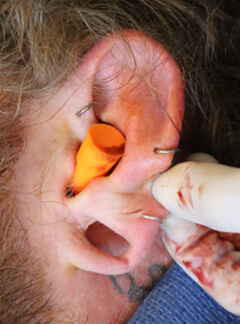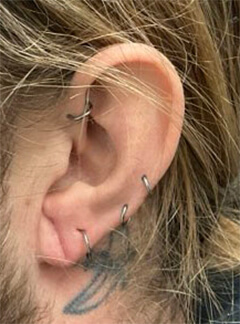

Otoplasty
While ears may not be the most eye-catching feature, there are individuals who feel self-conscious about their looks based on the prominence or asymmetry of their ears. Oftentimes, these individuals opt for an otoplasty—a surgical procedure performed to reshape cartilage, reduce size, and reposition a patient’s ears. An otoplasty not only enhances one’s outer appearance, but may also boost the confidence of someone who has struggled with low self-esteem for his or her entire life.
Before and After Otoplasty
View Otoplasty Photo Gallery
Who is an ideal candidate for an otoplasty procedure?
Otoplasty is ideal for individuals who are in good overall physical health and are unhappy with the shape, proportion, or size their ears. However, as with any surgical procedure, patient circumstances are considered on a case-by-case basis in order to properly determine the best route for achieving the desired results.
How is the surgery performed?
Otoplasty is an outpatient procedure in which the patient is provided a local anesthesia and a mild sedative. The surgeon makes an incision across the back crease of the ear and either removes or sculpts (refolds) cartilage, depending on the needs of the patient. Once the alterations are complete, the surgeon uses sutures to maintain the new shape and positioning of the patient’s ear.
An otoplasty procedure typically takes about two to three hours to complete. However, the individual needs of the patient may call for more or less time.
What can I expect after undergoing otoplasty?
For the first few days following an otoplasty the patient’s ears must remain bandaged in order to hold their place and heal as intended. The bandages are then removed and replaced with a lightweight headband that relieves the pressure, but also continues to keep the patient’s ears comfortably in place to continue healing properly. Five to seven days after the surgery, the patient no longer needs to wear the headband and is permitted to return to work or school. Typically the surgeon will allow vigorous exercise after three weeks; however, activities that may result in the bending or hitting of the ear should be avoided for at least six weeks.
Meet Our Surgeons
- Daniela Atencio, MD (Downtown Austin)
- Amy Bekanich, MD (Domain Northside)
- Minas Constantinides, MD, FACS (Lamar Central)
- Cameron Craven, MD, FACS (Westlake)
- Timothy McGee, MD (Round Rock)
- Michael Streitmann, MD (West University)
 Before
Before  After
After  Before
Before  After
After 